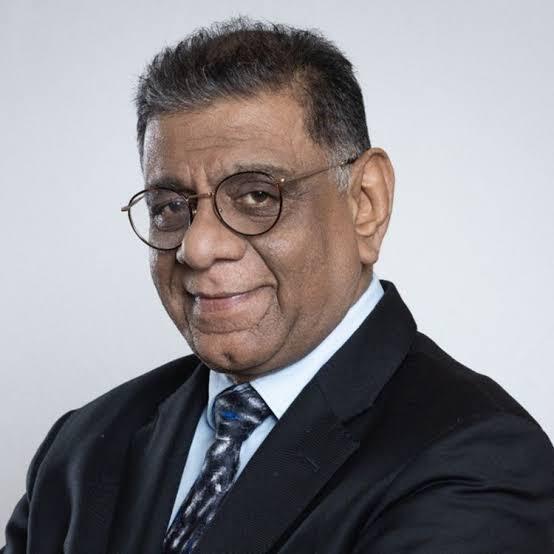French food and beverage giant Danone is making a strategic return to the Indian market, this time with a sharper focus on nutrition. Having exited the dairy sector in 2017 after an underwhelming performance, Danone is now aiming to ride India’s growing demand for health-centric products through its nutrition portfolio — a move the company sees as essential for its long-term global growth ambitions.
With a turnover of €27.3 billion, Danone is a dominant global player in dairy, plant-based products, and medical and early-life nutrition. But in India — a country with over 1.4 billion people and growing health awareness — its presence remains limited. Vikram Agarwal, Danone's Indian-origin Chief Operating Officer, is spearheading the renewed push. He sat down with Fortune India to share the company’s plans, reflections on its past exit, and how it intends to crack one of the most complex and promising markets.
Why Nutrition, and Why Now?
“India is undergoing a major transition toward healthier lifestyles,” says Agarwal. “We’re seeing growing health consciousness not just in metros but also in semi-urban areas. People are starting to understand that diet plays a crucial role in preventing lifestyle diseases.” The opportunity is significant. With India’s double-digit growth in consumer health sectors and a vast young population, Danone sees nutrition as its gateway to scalable, sustainable business. “In Europe or the US, 3–4% growth is seen as strong. But in India, no one is content with anything under 10–15%. And we’re just not participating meaningfully here yet.”
Lessons from the Dairy Exit
Danone’s earlier foray into India — first via a joint venture with Britannia and later through its own dairy portfolio — ended in disappointment. The JV collapsed into legal wrangling, and the standalone dairy venture struggled to gain traction. Key takeaways from that experience?
- Product relevance and pricing: “We failed to create dairy products that resonated with Indian consumers at acceptable price points,” admits Agarwal.
- Distribution challenges: “India’s cold chain infrastructure is nascent. Unlike Western countries, you can’t just set up a central plant and distribute chilled products nationwide. The cost and complexity are immense.”
While the dairy pullout was a setback, Agarwal believes the learnings are fueling a smarter re-entry.
A Localised Nutrition Strategy
Danone’s new India strategy is deeply localized. It hinges on established Indian nutrition brands like Protinex and Farex, acquired from Wockhardt in 2012. These products, already embedded in consumer behavior, form the cornerstone of Danone's Indian nutrition play. “Indians have unique nutritional needs. Our aim is to apply global nutritional science to create products specifically tailored to Indian health profiles,” says Agarwal. The company also understands that local formats and affordability are key. “India is a sachet market,” he concedes, “but we also need a full portfolio approach — sachets for mass access and premium packaging for higher-value segments.” Danone recently launched sachets for infant nutrition, aiming to reach a broader base, especially in rural and tier-2 cities.
The Scale Challenge
Danone’s biggest hurdle in India is scale. “We’re strong in pharmacy distribution but weak in traditional retail,” says Agarwal. Building a nationwide reach akin to giants like Unilever will take time. Hence, Danone is exploring strategic partnerships, including collaborations with non-competing FMCG firms and B2B distribution platforms. “We’re open to alliances. Organic growth alone won’t get us the scale we need.”
Expanding the Nutrition Universe
Danone’s ambitions in India go beyond infant and adult nutrition. The company is planning entry into kids’ nutrition for ages 6–18 — a segment where it already has strong global products in markets like Mexico, Indonesia, and Thailand. A potentially transformative area is medical nutrition. “Post-curative care, such as nutrition after cancer treatment, is largely underserved in India,” Agarwal says. “Globally, this is a mature market, especially in Europe and China. We want to bring those solutions to India.” Danone also plans to innovate with drinkable nutrition formats to increase convenience and daily consumption.
Conclusion: Long Game in a Complex Market
India’s vast population, rising incomes, and increasing health awareness make it a critical growth frontier. But it’s not an easy market — a point Danone knows well from past experience. Still, Agarwal is optimistic: “We have the right brands, the right science, and now, a better understanding of what works here. Nutrition is not just a business opportunity in India — it’s a responsibility.” Danone’s second coming may not be flashy, but with a patient and localized approach, the French multinational is positioning itself for long-term relevance in one of the world’s most dynamic markets.
Follow & Subscribe:
👉 Agri-Food Update on LinkedIn for the latest updates and insights.
🌐 Visit us at www.agri-food-update.com for more information!



